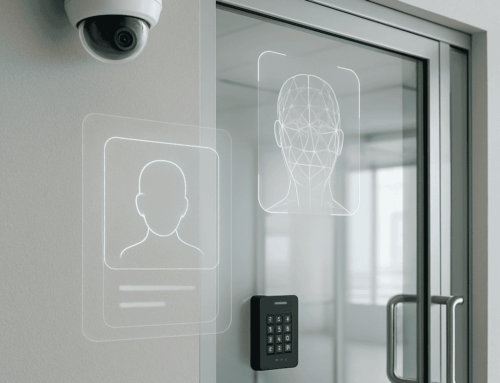Headache-free Data Center Cable Management Is Possible

The beauty of modern plumbing is that nobody gives a second thought to where the water came from or where it will go. The only time we think about the pipes is when something goes wrong. Modern data networks are very similar, unless of course you are a network admin or IT professional and then you’re constantly aware that 1s and 0s can’t move a micron unless the wires and equipment are installed, maintained, and upgraded properly.
That’s why data center cabling and cable management are their own disciplines within the broader field of IT infrastructure. And there are some best practices you should know to make your life a lot easier when it comes to managing the cables in your data center.
What is Data Center Cabling?
In contrast to the exceeding outdated method of point-to-point cabling, modern data center cabling is based on a detailed plan of the facility to optimize for a range of considerations including:
- Easy access for moves, additions, and changes (MACs)
- Proper fill rates in cable trays and other support structures
- Sufficient airflow for temperature control
- Minimum bend radius for different cable types
- Future expansion of bandwidth
- Limiting cross-talk and signal attenuation
- Clear designations for where a cable starts and ends
- Easy documentation and comprehension
- Isolation from structured power cables or other sources of electrical interference.
These considerations change based on the facility in question as well as the cables and equipment in use.
Common Data Center Cable Management Challenges
The most common challenges that IT professionals encounter with cable management in a data center are split between two scenarios:
1. Modifying an existing network
Pulling and replacing outdated or malfunctioning cables is a chore in the best situations. If the team that built the network in the first place wasn’t using best practices for cable support, labling or routing, you will spend a lot of time setting things right.
It’s common to see temporary solutions become permanent and unplanned upgrades or renovations conflict with the original network infrastructure.
The best thing that you can do is audit the existing network and infrastructure, identify the main issues that are interfering with performance or your ability to make changes. Then you can systematically implement solutions and set yourself (or someone else) up for a much simpler maintenance routine in the future.
2. Constructing a new network
In most new construction projects, such as residential or commercial buildings, unstructured cable is one of the last trades that visit a worksite before the occupants move in. In a data center, the entire building is designed around the constraints of unstructured cable or should be. One of the trickier challenges to navigate is how much spare capacity you should build in.
10% is a bare minimum, and 20% spare capacity is a much safer amount. Consider how much space you need for additional cables, can your HVAC system handle the load of 20% more server racks and heat-producing equipment. How easy will it be to pull new cables through your backbone, horizontal, and work area raceways?
This extra capacity is also helpful when you need to test or replace components in the network. It should provide redundancy for some systems so that you can turn equipment off without compromising the overall performance of the data center.
Data Center Cable Management Best Practices
Managing data center cables is a balancing act. You need to optimize for performance, efficiency, budget constraints, and disaster preparedness. One of the tools that can help everything go smoother is a data center infrastructure management software platform or DCIM. A DCIM makes documentation and maintenance much easier, even for relatively straightforward networks.
Here are some of the best practices for system administrators and IT cabling specialists.
Installation Best Practices
Determining the length of cable needed before installation
A tape measure or wire tape is a necessary tool even in the best situations. However, if you’re using a DCIM or CAD program to map the space, you should be able to calculate precise cable lengths without fishing a tape through the raceways or crawlspaces. Although you may choose to work with pre-terminated cables instead of terminating them one-by-one, you still want to know how much cable you’ll need ahead of time.
Creating precise instructions for installation
It’s easy, even for experienced IT professionals, to incorrectly install unstructured cable. Ignoring minimum bend radii and maximum pulling force on a cable can cause internal breaks that hamper performance and are extremely hard to troubleshoot down the road. This is even more important for fiber optic cables, which aren’t vulnerable to electrical interference but require more rigid installation procedures to maintain the cable’s integrity.
Design your infrastructure with cable management in mind
Paying for more cable raceway capacity than you think you need is an easy way to reward your future self (or the future system administrator). Adopting a strict labeling procedure such as the ANSI/TIA-942-B-2017 Telecommunications Infrastructure Standard for Data Centers or BICSI 002-2019 Data Center Design Implementation & Best Practices.
Ask yourself if the design choices you’re making will facilitate future MACs or hinder them. Do your best to eliminate the use of temporary solutions where a permanent solution is required.
Organization Best Practices
Documenting all new cabling installations
Back to the importance of a comprehensive DCIM software solution, you must be able to document your network in precise detail if you want to make future MACs and maintenance as easy as possible. Every data center must be flexible enough to meet the demands of clients and the marketplace. A DCIM can help simplify the tedious work of documentation and give you piece of mind about the resiliency of your data center.
Think about compatibility
If you’re installing new cables, you get the option of buying the latest and greatest equipment. It may not make sense for every application to install a cutting-edge fiber-optic network, but you should seriously consider how soon you might need to upgrade if you choose to build using an older cable format such as CAT 6 instead of CAT 6a. If you decide to use a mix of copper and fiber optic cables in your network, you will also need to plan for the extra equipment required to connect the two types of cables and keep data flowing. An all-fiber optic network isn’t necessarily better than an all-copper network. It just depends on your budget and performance needs. There’s no reason to spend the extra money on fiber if your organization will never fully use the extra benefits that come with it.
Future-proofing your environments
Today’s solution can become tomorrow’s headache if you don’t take the time to assess what future needs might look like. What if your client base or business grows by 50-100% in the next three years? Will your data center be able to handle the load? What if you choose to use a third-party such as Amazon Web Services to supplement your data center? What are the costs and benefits associated with those scenarios?
Another component of future-proofing is disaster preparedness. You need to assess what types of disasters your data center is the most vulnerable to and how high the likelihood is that you’ll face that situation in the foreseeable future. Although server redundancy is a basic characteristic of any data center, there are other systems that can’t be made redundant in a cost-effective way. How will your team respond if a non-redundant system fails?
Future-proofing isn’t about borrowing trouble or being overly optimistic. It’s about having the foresight to examine real possibilities and translate them into contingency plans.
About i.e.Smart Systems
i.e.Smart Systems is a Houston, TX based technology integration partner that specializes in design and installation of audio/visual technology and structured cabling. For more than three decades, our team of in-house experts has partnered with business owners, architectural firms, general contractors, construction managers, real estate developers, and designers in the Houston market, to deliver reliable, scalable solutions that align with their unique goals.




